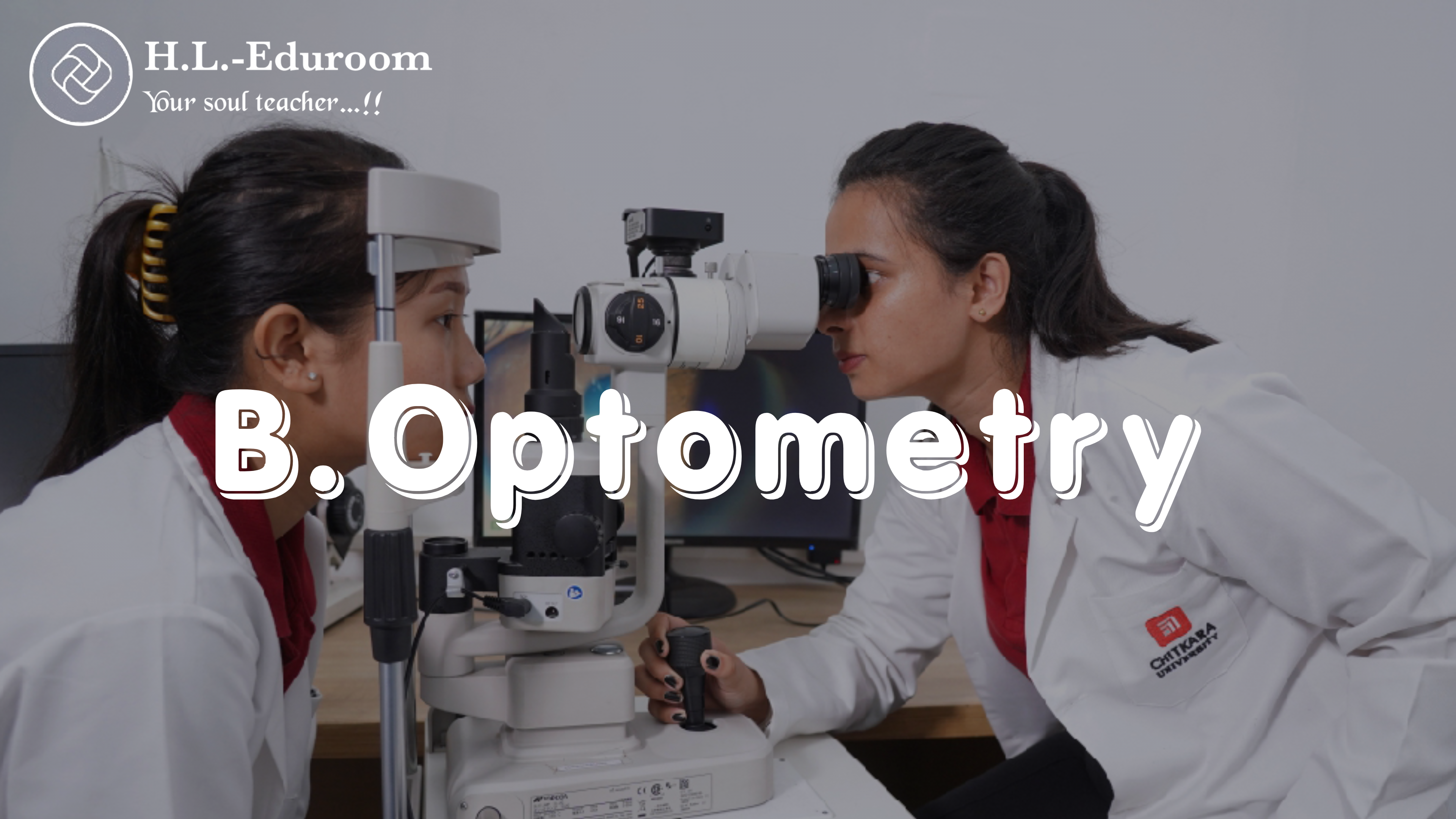Back to All Programs

B. Optometry
Bachelor of Optometry
The B. Optometry program focuses on the study of the eye and vision care, including the diagnosis and treatment of visual problems and eye diseases.
Program Overview
Eligibility
Passed 10+2 or equivalent with Physics, Chemistry & Biology. Minimum aggregate: 50% in total marks or GPA 2.4
Duration
4 years
Available Seats
Varies by college
Program Description
The curriculum is designed to produce competent optometrists capable of providing comprehensive vision care services and managing eye health.
Syllabus Subjects
- 1Ocular Anatomy and Physiology
- 2Ophthalmic Optics
- 3Ocular Diseases
- 4Contact Lens
- 5Pediatric Optometry
- 6Low Vision
- 7Public Health Optometry
- 8Binocular Vision
Detailed Syllabus
Zoology
- Biology, origin and evolution of life (4 questions): Introduction to biology, theories of origin of life, evidences and theories of organic evolution, human evolution
- General characteristics and classification of protozoa to chordates (8 questions): Classification of animal kingdom, characteristic features of different phyla with examples
- Plasmodium, earthworm and frog (8 questions): Study of life history, morphology, anatomy and economic importance of Plasmodium, Pheretima (earthworm) and Rana tigrina (frog)
- Human biology and human diseases (14 questions): Digestive, respiratory, circulatory, excretory, nervous, reproductive and endocrine systems; Common human diseases; Sense organs
- Animal tissues (4 questions): Epithelial, connective, muscular and nervous tissues - their structure, location and functions
- Environmental pollution, adaptation and animal behavior, application of zoology (2 questions): Causes and control measures of environmental pollution; Animal adaptations and behavior; Application of zoology
Botany
- Basic component of life and biodiversity (11 questions): Cell structure and function, biomolecules, enzymes, classification of plants, viruses, bacteria, fungi, lichens, and conservation of biodiversity
- Ecology and environment (5 questions): Ecosystem, ecological adaptation, ecological imbalance and its consequences, greenhouse effect and global warming
- Cell biology and genetics (12 questions): Cell division, Mendel's laws, linkage and crossing over, mutation, genetic materials and genetic code
- Plant anatomy, physiology, and reproduction (6 questions): Plant tissues, photosynthesis, respiration, transpiration, growth regulators, reproduction in plants
- Algae and fungi (3 questions): General characteristics and life cycles of algae and fungi, economic importance
- Bryophytes, Pteridophytes, Gymnosperms, and Angiosperms (3 questions): General characteristics and life cycles
Chemistry
- General and Physical Chemistry (25 questions): Atomic structure, chemical bonding, states of matter, thermochemistry, chemical kinetics, chemical equilibrium, ionic equilibrium, solutions, electrochemistry
- Inorganic Chemistry (15 questions): Periodic table, s-block, p-block, d-block elements, coordination compounds, metallurgy, environmental chemistry
- Organic Chemistry (10 questions): Basic concepts of organic chemistry, hydrocarbons, haloalkanes, alcohols, phenols, ethers, aldehydes, ketones, carboxylic acids, amines, biomolecules
Physics
- Mechanics and Heat (20 questions): Kinematics, dynamics, work, energy, power, simple harmonic motion, fluid mechanics, heat, thermodynamics
- Optics and Modern Physics (15 questions): Geometrical optics, wave optics, photoelectric effect, atomic physics, nuclear physics
- Electricity and Magnetism (15 questions): Electrostatics, current electricity, magnetism, electromagnetic induction, alternating current
Weightage / Marks Distribution
| S.N. | Content/Domain | No. of Questions | Marks |
|---|---|---|---|
| 1 | Zoology | 40 | 40 |
| 2 | Botany | 40 | 40 |
| 3 | Chemistry | 50 | 50 |
| 4 | Physics | 50 | 50 |
| 5 | Mental Ability Test (MAT) | 20 | 20 |
| Total | 200 | 200 | |
Past Year Question Papers
Download previous years' question papers to practice and understand the exam pattern:
